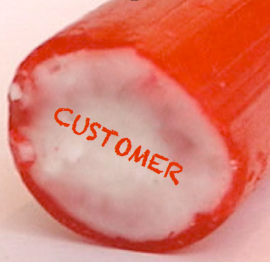“Do you want to sell sugared water for the rest of your life? Or do you want to come with me and change the world?”
(Steve Jobs’ pitch to John Sculley, then CEO of Pepsi,
to persuade him to become CEO of Apple in 1983).
Every day for the past few months, I have walked past this statue of the dancer, David Wall, by Enzo Plazzotta. You can find it outside a block of upmarket flats on Millbank in London. The title of the piece is Jeté, a ballet term that refers to a leap.
Honestly, for about a month, I hated it.
David Wall’s face is set almost in a pout and his hair – well, it would do well in American Hustle.
But I am a sucker for excellence. It grew on me. I noticed the precision that the sculptor used. I started to look at the figure of the dancer himself.
The sculpture, magically, captures the dancer in the air. His leading foot turns, just so, to maximise extension and clarity of line. His rear foot also turns, but differently.
His fingers, at the end of his immaculately extended arm, are all where they need to be. His trailing hand makes the line of his leap perfect.
This figure in metal, like, I imagine, the figure in the flesh, transforms from something lumpen and heavy to something free, elegant and apparently effortless.
Which, I know, is the exact opposite of the truth.
EVERYTHING about this leap is deliberate. The turn of the ankle, the angle of the leg, even the spacing between the fingers.
Everything.
Deliberate effortlessness like this is only possible through untold hours of training, development of technique, feedback and coaching, just to produce an instant in the air which, were it not been captured in sculpture, might go unnoticed.
The purpose is not just to make the leap, but to strive to make it perfect, even if the only person who knows that it is perfect is the dancer himself.
This is, I suppose, what art means: to conceive of what might be right and then set oneself to achieve the impossible standards that it demands.
And the same applies to business. The best businesses, the ones we love, the ones we welcome into our lives, exist because the people behind them want to do something, to achieve something, to make a difference.
They focus on doing the right things, as well as they can, to the best of their ability. They might be making cars or phones, or flying planes or driving trains, or making television programmes – or the ads that come in between. What we perceive, as customers, as buyers, as people, is a sense of excellence.
And so we buy.
And we enjoy buying.
And we keep buying.
Because these companies exist to make things better for their customers and they, and we, succeed when they do.
Do these companies make money? In the main, yes.
But that is not what they are in business to do. (and which is why, sometimes, their investors get grumpy).
The money they make is a side-effect. They make money because they are doing the right things. Because they (and their customers) in what they do. They believe that taking infinite pains to get things right; taking deliberate care about every last detail; and striving for a vision that has meaning, are things worth doing in themselves.
But, like an artist who prostitutes himself for money, as soon as a company forgets this, its art suffers.
I was once asked by the CEO of a multi-national tech company what I thought might be the difference between a ‘good’ company and a ‘bad’ one. I said that I thought I could see one core difference. A ‘good’ company’s primary concern is its business and how it can do better; a ‘bad’ company’s primary concerns are ‘the numbers’ and how it can make them better.
And companies that focus on their numbers aren’t focused on the customer.
Customers don’t buy numbers. They don’t experience numbers. They don’t want numbers. They want the stuff that a company does that solves their problems, gives them value and makes them feel good.
My months of walking past Enzo Plazzotta’s sculpture have taught me something about business. The simple delivery of business, doing it better and making some cash – this is the craft of business. But striving to create and run a business which customers enjoy, which employees want to drive to greater heights and which makes a genuine difference to people’s lives – this is the art of business. This makes being in business worthwhile.
It’s open to all of us. If we can conceive of greatness, if we take deliberate pains to get it right, and if we set and meet impossible standards, then we too might create something wonderful.
I believe that, if it wants to, any business can achieve wonder. Can make customers want to be part of their adventure. Can have their people achieve amazing things just to be able to say, “…we did that”. Can have customers enjoy, and value, what they buy.
This is why I spend my time with organisations to make the customer experience better. Because it is at the point when customers experience what we say and what we do, that, perhaps, we make masterpieces.







 Lean Start-Up methods offer an overwhelming case for working with customers as early in the product cycle as possible. This lesson applies to all of us, not just start-ups.
Lean Start-Up methods offer an overwhelming case for working with customers as early in the product cycle as possible. This lesson applies to all of us, not just start-ups.
 Only when we build for our customers will they come.
Only when we build for our customers will they come.